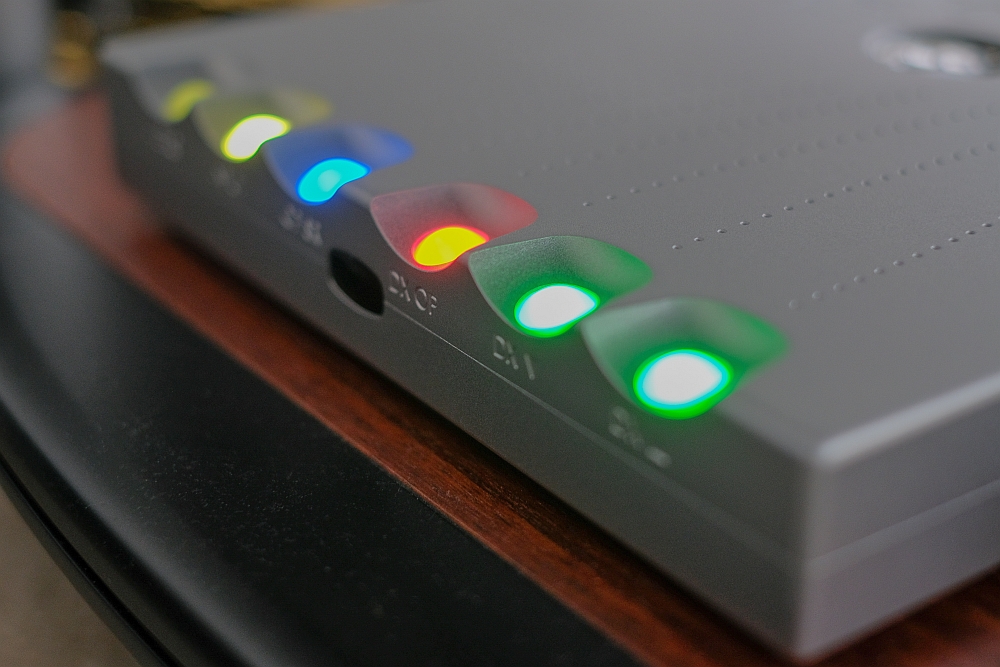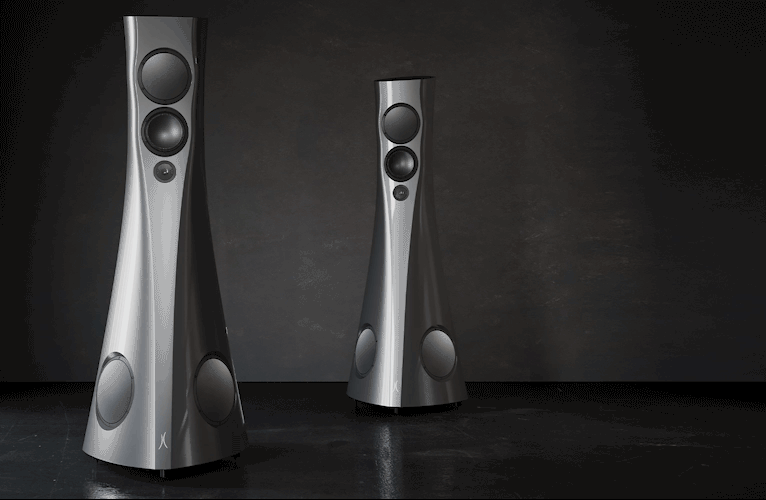As the great Robert Plant sang, “…there are two paths you can go by…” and when it comes to upsampling audio, whether from disc or files-based, there are even more. Chord Electronics’ way, via the highly skilled Robert Watts, is by way of proprietary FPGA and filtering methodologies combined with Watts’ drawing-out of as many ‘taps’ as possible from the digital signal. Now, the company offers its Hugo M Scaler standalone upscaling component (a technology previously only available via the disc-based Blu Mk.II) which has been made to reach the one million tap mark. How will this translate to the M Scaler’s sonic abilities when handling your source material? We take a look at the latest digital wizardry from the tech alchemists at Chord Electronics.
Fast & Fouriers
To follow on from the opening sentence, one way which seems to have caught many users’ imagination is the software-based HQPlayer when incorporated in the superb Roon player. Your computer has a lot of processing power so, in theory at least, this would seem a solid way to upsample your music files. As good as that avenue may be, the processing power available through the Hugo M Scaler is also rather powerful but, in addition, it enjoys the benefits of the proprietary algorithms, dedicated Fast Fourier Transform Filters (FFTF) and filter ‘taps’ developed by digital wiz Robert Watts, who has been perfecting and evolving this technology for many years for the UK’s Chord Electronics.
In fact, the team of consultant Robert Watts and Chord Electronics’ proprietor John Franks has achieved a level of digital signal flow sophistication that has placed it among the leaders in the industry. No primary-function off-the-shelf Digital-to-Analogue Conversion (DAC) chips here. The manipulation of the naughts and ones is by way of a number of techniques which, aside from Watts’ brief presentations on You Tube, et al., will remain undisclosed as a proprietary secret. However, Robert Watts has devised the proprietary algorithms and Field Programmable Gate Arrays (FPGA) based filtering – which the company terms Watts Transient Alignment (WTA) – to work in conjunction with 1 million ‘taps’ and other forms of proprietary digital manipulation. The M Scaler’s suite of technologies present a strong potential for SOTA digital performance.
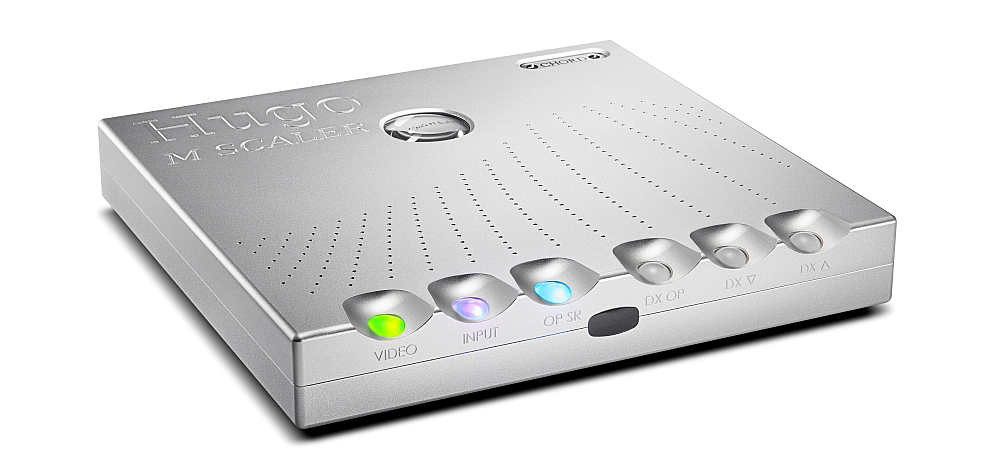
Watts tells us that while most of the designers are opting for short digital filters, he claims that his adoption of ever-longer digital filters actually sounds better. Over several years of increasing filter ‘taps’, Watts has achieved the landmark one million linear-phase FIR (Finite Impulse Response) interpolation filter coefficients, or filter ‘taps’, when most designs use only several hundred taps. Watts is adamant the number of taps and the correlation with ‘transient timing’ bears a strong relationship to audio performance. The extrapolation being that transient timing, aside from its relation to pitch in the low frequencies, affects timbrel qualities and leading note attack.
I asked Robert Watts for some brief clarification:
An Infinite processing sinc filter will perfectly reconstruct the original bandwidth-limited signal. The interpolation filter re-creates the missing bits between samples. A tap length tells you how complex the interpolation filter is, and to perfectly reconstruct you must have infinite taps. Whittaker-Shannon interpolation needs a sinc impulse response but this requires an infinite tap length, infinitely oversampled, FIR filter which will perfectly reconstruct the ‘missing bits’.
The WTA algorithm is a unique windowing function that is intended to minimise transient timing errors. With one million taps, the WTA filter is identical to the ideal sinc function filter to a better than 16-bit accuracy. This means that reconstruction is guaranteed to be more than 16-bit accurate – even the best DACs today are only 2- or 3-bit accurate with reconstruction.
In our extensive listening tests, each increase in tap length together with continuous improvements to the WTA algorithm has given much better sound quality. This I also found in my research into the physiology of hearing, when it was apparent that transients were a major factor for the perception of music.
The full theory behind the digital technologies incorporated into the one million taps scheme is complex and a full expansion on the theories are beyond the scope of this review. Therefore, I provide the following link to a white paper on the Chord Electronics website: The-theory-behind-M-Scaler-technology.pdf
Coincidentally, towards the end of the review process and just prior to publication, Robert Wong, Head of Chord Electronics’ Asia Pacific operations, visited Australia. I met with him to get some more inside info on the M Scaler. I started off by asking him what the acceptance factor was in what are sometimes considered conservative, or more traditional, audiophile markets such as Asia:
The uptake is astonishing. Since its launch, I place it in customers’ Hi-Fi systems and… well, they’ve never heard anything like the M Scaler. They may have dabbled with other upscaling devices but once they hear the M Scaler… But it does not cost an arm and a leg; it’s $7500 [AU]. That’s the way I sell it, by practical demonstration. And it’s catch up mode for us. Demand far outstrips supply currently.
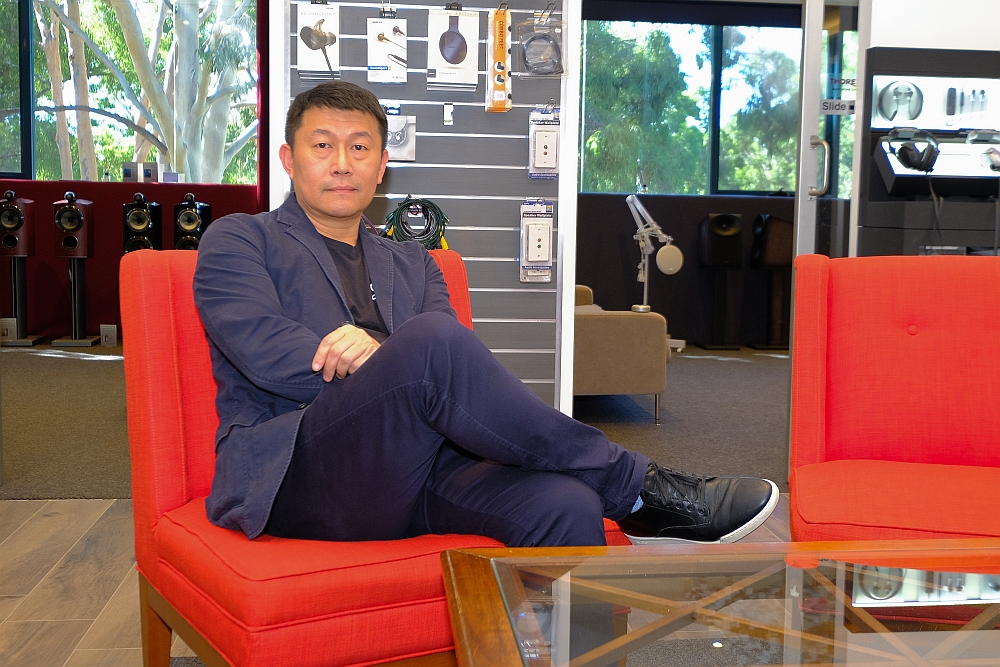
I also wondered what percentage of users were happy introducing the M Scaler on to their own DAC setups or whether the trend was to match M Scaler to one of the suitable Chord Electronics DACs:
Well actually, in APAC [Asia/South Pacific, which of course includes Australia – Ed] we are accepting it extremely easily. We’re always looking for quality and improvement in sound. Taking one dealer as an example, the adoption of M Scaler with existing DAC is 50 percent. Basically, customers have gone to a dealer, listened to it, and purchased the M Scaler as a standalone component to add to their system. Having said that, also many customers are finding the great benefits of matching the M Scaler to Qutest or, even better, Hugo TT 2. I think it’s also important for dealers to know the product intimately so they can explain to the end users what the different colour schemes on the spheres mean. Also how to best set the M Scaler to get the best performance. We’re working together, and are on the same page, with all our dealers. This is one of the reasons, in addition to the superb sound performance, which has kept demand above our current capability to meet it.
Scaling Heights
So the Hugo M Scaler sits between your computer or disc player and your DAC. As a conduit for upsampling CDs, it takes in an S/PDIF signal at 44.1 kHz and upsamples it up to the maximum resolution your system’s DAC is capable of handling. The maximum upscaling frequency the M Scaler itself is capable of is 705.6 kHz into your DAC, however, that resolution extends to 768 kHz (from 96 kHz input data) when connected via the dual-BNC-input (cables provided) on Chord’s own DAVE, Qutest and Hugo TT 2 DACs.

To facilitate connectivity, M Scaler’s rear panel offers (from left to right) two BNC S/PDIF inputs, two optical TOSLINK inputs, a galvanically-isolated USB-B input, an optical TOSLINK output, a BNC S/PDIF output and the twin BNC outputs for connectivity to the aforementioned compatible Chord Electronics DACs. It’s within reason to have expected a USB output with provision for the full 768 kHz resolution to your DAC’s USB input, alas, that option is not present. I’m told this inclusion would have meant a significant delay to the M Scaler’s release date. There’s an adjustable sample rate output, a bypass function and a low latency video mode which deals with sync issues. A 1.5V DC input accepts the included power pack.
The M Scaler is manufactured in the UK and is a beautifully built small-form unit with a chassis which has been precision-milled from solid aircraft-grade aluminium. Internally, separate machined compartments provide shielding from noise and RF – by-products of powerful computing power. As has become Chord Electronics’ trademark, the M Scaler features a number of ‘colour spheres’, lined-up across the front top face, with each sphere representing a function and/or feature status. A changing colour scheme on the OP SR (Output Sample Rate) sphere announces the output resolution. There’s a trio of spheres denominated ‘DX’ that will allow future compatibility with Chord Electronics products, including functionality via direct-to-amplifier connectivity.
Another oft-used Chord styling motif, the clear window reveal into the unit’s innards, is used here again. A simple full-function plastic remote control is provided. A quirk: there’s no on/off function, so M Scaler remains powered up constantly. Watts tells me this keeps the clocks running (a good thing) while a low power mode activates after a period of non-usage where all the spheres turn-off, bar the OP SR.
Upscale Sound
I S/PDIF-ed the Hugo M Scaler via the trusty CD transport and also fed it a USB signal from my Roon Core laptop. The M Scaler then performed its number crunching on to my reference Totaldac Digital-to-Analogue Converter. For a brief and most pleasurable stint, I had the Hugo TT DAC available to audition as a tag team in conjunction with Hugo M Scaler.
Given the upsampling menu list available when playing straight Redbook CD, I started with the ‘Blue’ The Dali CD Volume 4 sampler’s “Did Trouble Me” by the inimitable Tom Jones. In many systems this engaging track (somewhat overused at shows now, sadly) can reveal the miking technique as displaying a modicum of proximity issues. Having said that, the overall recording quality is excellent, ergo the show over-usage as a demonstration music item, but Jones’ ‘Ss’ and ‘Ts’ can sound sibilant and his overall vocals are somewhat ‘edgy’. Not here, not now. The M Scaler tames sibilance – and general brightness for that matter – while maintaining detail, musicality and verisimilitude. Off the bat, within the first track (and in all subsequent listening) the M Scaler lifted digital playback to its most natural rendering of real music. And yes, I accept the controversy this may bring… M Scaler-ed, your digital rig will sound analogue minus the drawbacks. There! Attack fodder for the keyboard bandits.
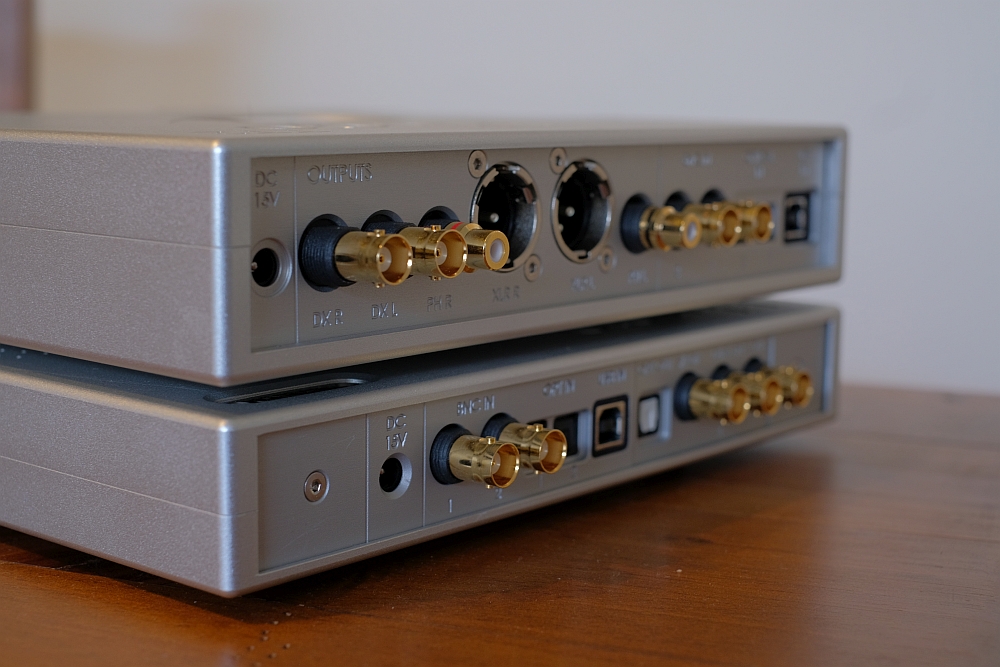
Many of my much-loved but somewhat less listenable recordings – mostly of contemporary rock and alternative music – were revitalised anew. The M Scaler has revealed this particular aspect to an unprecedented extent. Coincidentally, the soon to be reviewed and quite exceptional Dynaudio Confidence 20, which I also had in-house for part of the time, has achieved this somewhat rare feat too. There’s a sense of that the underlying digital… stress, have been wiped out. Totally. Italicising ‘stress’ is my way of expressing, and emphasising, in a word a phenomenon that many, many audiophiles and music lovers experience, to different extents, as an all-permeating aspect of digital playback. With the M Scaler in the signal path, this underlying tension is eliminated to reveal utterly natural, complex and smooth timbres, excellent dynamic expression and appropriate detail rendition with zero negative aspects.
Another area of remarkable improvement is in the low-end. Take any bass instrument – I use a whole heap of recordings for this from Brian Bromberg, Stanley Clarke, Flea, Jaco Pastorius, Primus and many more – and you’ll hear a sharper attack to the leading edges (the ‘starts’ of the notes) and an enhanced sense of timing. Pure rhythm. Rob Watts, you weren’t kidding…
Case in point: Rage Against The Machine’s “Take The Power Back” and “Bullet In The Head” from their self-titled album. Both these tracks – and indeed the whole album – feature phenomenally well-recorded bass as mastered by the dexterous Tim Commerford. With the M Scaler, the power and snap of the electric bass guitar was noticeably improved, compared to sans, and the texture of the tone more evident, clearer and truer. There was added scale (pun intended) to the gut-punch and more drama to the dynamics.
The same across the board improvements were experienced with subtler forms of music. The beauty, expansiveness, delicacy and signature smoothness carried through to Jazz and Chamber ensembles where the M Scaler’s sweetening of any etch allowed extended tonal colours, now on a wider palette.
Aggressively strummed and picked acoustic guitar is handled with added impact and attack while also, once again, taming any etch and presenting the instrument more naturally and realistically. From John Butler to Di Meola and on to Segovia the performance of M Scaler sweetened without disruption to detail, leading edge attack and dynamics.
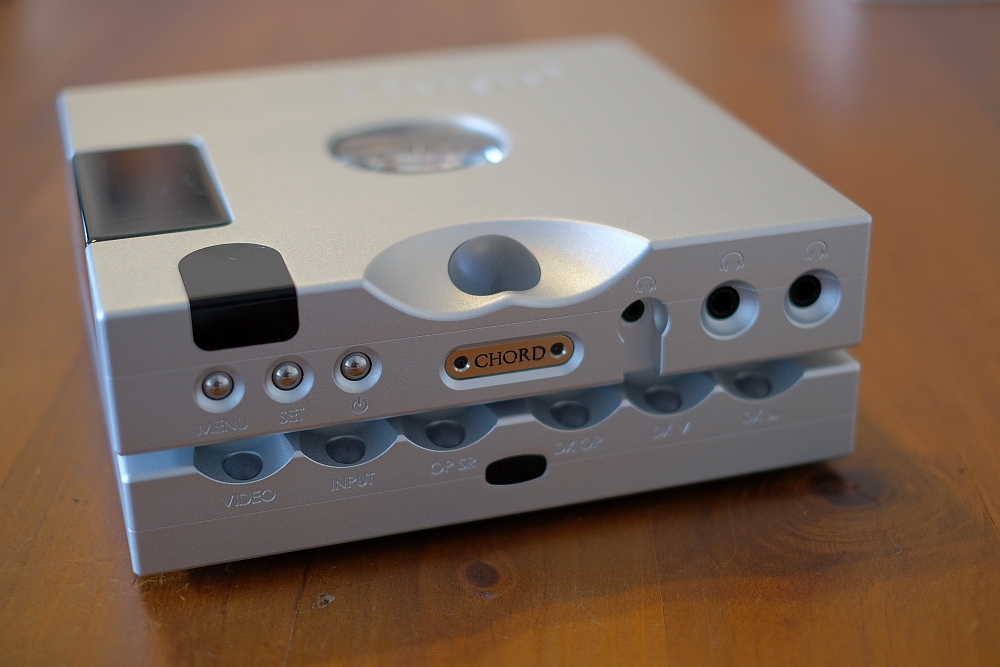
Comparing the Hugo duo of M Scaler and TT 2, brought forth an added incisiveness to the music with perhaps a subtle increase in detail. The enhanced sense of overall precision to the sound via the dynamic Hugo duo as opposed to M Scaler and Totaldac was, again, quite subtle but nevertheless recognisable. Some listeners may prefer the warmer, gentler presentation of the M Scaler and Totaldac while other equally astute listeners would favour the added directness, the more overt interpretation of the Hugo TT 2. Interestingly, in the context of my system the M Scaler brought forth its undeniable virtues to a higher degree when tethered to the CD rig where the drama, sweetness, detail and bass prowess were of a larger magnitude than on the CA (Computer Audio) setup.
The take away here, however, is that regardless of its DAC pairing, the M Scaler brought forth an analogueness (did I just invent a new word?), a delicacy of detail, micro-dynamic enrichment and a bass nimbleness that was unquestionable and easily discernible, I might add.
Conclusion
When it comes to self-contained digital components designed to take the medium in its fundamental form to a higher plane, there are very few options. First to mind are dCS’, Esoteric’s and MSB Technology’s superb re-clocking and upsampling components (there are others, I’m sure), all of which, I’m confident, perform exceptionally. The Hugo M Scaler joins that category of product but offers a different approach.
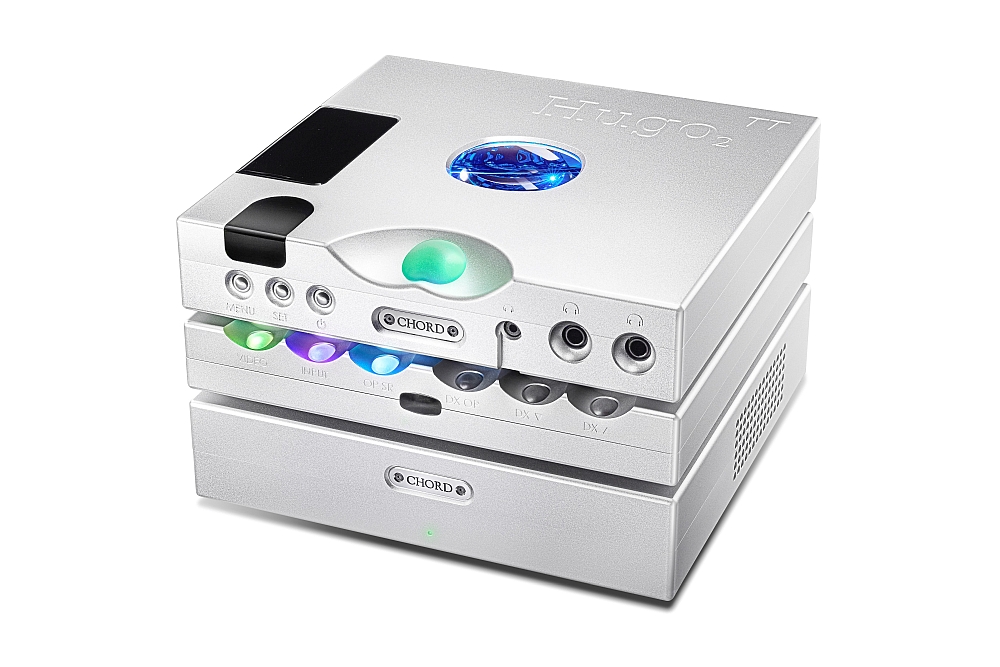
For starters, its price-of-admission is significantly lower, and while its chassis may be comparatively diminutive, it’s built to extremely high standards. The Hugo M Scaler doesn’t re-clock, per say, but it controls the signal via unique proprietary WTA algorithms that place it at the leading edge of digital manipulation. What’s more, it offers a healthy features list while also allowing for the development of future functions activation leading to operational continuity within a Chord Electronics digital universe.
For all of those reasons, but most importantly for its undeniable sonic enhancement of tonal and low-end foundations of your digital signal chain, I have to give the Chord Electronics Hugo M Scaler a very hardy and enthusiastic recommendation. While it may require a minor readjustment to accept yet another device into the signal chain, there’s no denying the performance payoff more than justifies it. In fact, here at SoundStage! Australia HQ, the Hugo M Scaler is a certified keeper.
To quote the Zep lads once again, this is the time to “change the road you’re on.” Snub at your own musical-enjoyment peril…
… Edgar Kramer
This email address is being protected from spambots. You need JavaScript enabled to view it.
Associated Equipment
- Speakers — Wilson Audio Alexia Series 2, Axis Loudspeakers VoiceBox S, Vermouth Audio Little Luccas Mk.II
- Amplifier — Gryphon Audio Antileon EVO
- Preamplifier — Supratek Cortese, Lightspeed Attenuator LDR passive
- Sources — Digital: Yamaha CD-S2100 transport, Chord Electronics M Scaler, Totaldac d1-core DAC, Asus PC as Roon Core. Analogue: Michell Engineering Orbe with Gert Pedersen Level 3 modifications and Origin Live Ultra upgraded motor, Trans-Fi Terminator air bearing linear-tracking arm, Shelter Harmony cartridge, Supratek Cortese & REDGUM Audio RGPH2 phono stages
- Processor — DEQX PreMate
- Cables — sILENzIO loom, Vermouth Audio Black Pearl Mk.II loom
- Audio Rack — SGR Audio Statement Model V
- Miscellaneous — Les Davis Audio Viscoelastic CLD discs
Chord Electronics Hugo M Scaler Digital Upscaler
Price: AU$7500
Warranty: Three Years
Australian Distributor: Radiance Audio Visual
+61 (0) 2 9659 1117
www.radianceav.com.au
Chord Electronics
The Pumphouse, Riverside Park, East Farleigh
Maidstone ME16 9NB
United Kingdom
+44 1622 721444
www.chordelectronics.co.uk






